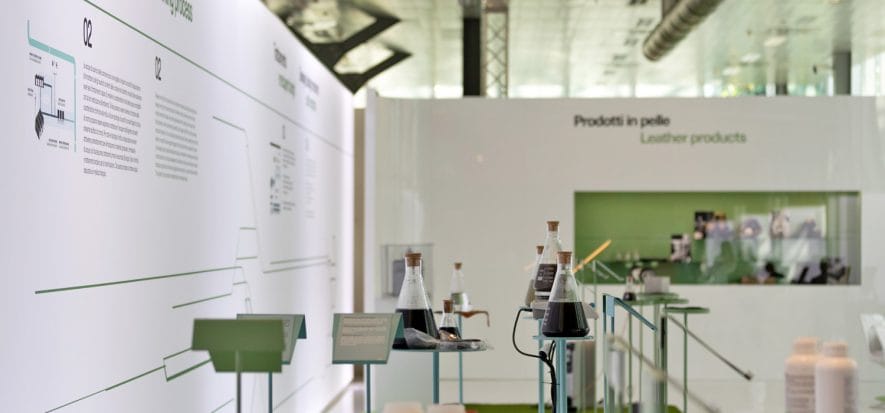Focus on salt and hair, fat residues and connective tissue, sewage. While dealing with environment safeguard, which is the top priority in current times, Italy’s leather-tanning industry told us about its natural feature, circularity, during Lineapelle 97, which took place on October 2-4. Such value is rather obvious to leather insiders and professionals; conversely, most people (and even more than them, unfortunately…) do not know much about it. Lineapelle created The Leather (Re) Cycling Exhibition, an exhibiting area fully reserved to highlight Italian tanneries’ ability to “close the circle”. In that space, through an analytical storytelling, they did not just spotlight the circular value of the leather manufacturing cycle, but also emphasized the importance and proactivity of its support in terms of recycling culture.
Let us give the floor to the main characters
The exhibition and storytelling journey has been flowing along the words of the actual circularity makers, namely treatment companies and consortiums that create and implement machinery, technologies and processing cycles to enhance “waste scraps”. Here are some of the main actors who participated in The Leather (Re) Cycling Exhibition:
- Massimo Neresini, SICIT managing director (click here to watch the video interview)
- Christian Dal Maso, Dal Maso Group chief manager (click here to watch the video interview)
- Domenico Castiello, director of Te.Co. (Polo Tecnologico Conciario, Tanning Technology Hub), based in Santa Croce sull’ Arno (click here to watch the video interview)
- Andrea Giachi, Consorzio Aquarno Research & Development (click here to watch the video interview)
- Francesco Spennati, Research & Development at Cuoiodepur and Consorzio Conciatori, Ponte a Egola (click here to watch the video interview)
- Luciano Falqui, Officine di Cartigliano Project Manager (click here to watch the video interview)
- Giancarlo Bernini, director of Consorzio SGS, Santa Croce sull’ Arno (click here to watch the video interview)
What visitors could see
In the area, set up at Fieramilano, at the entrance of hall 14, they exhibited some samples of leather processing scraps. They are actually raw material for the whole recycling industry, which attends to transform them into gelatines, fertilizers and building materials. After focusing on the materials cycle, they also managed to analyse deeply the subsequent stages of the water process: once water flows into the treatment systems, it undergoes filtering and cleansing processes, prior to its reintroduction into the supply network for further uses. For the records, they do not only cleanse water, but also refine it: in fact, all of the scraps taken during such long-lasting and delicate filtering process, made feasible through sophisticated and cutting-edge machinery, will be recycled as well.










